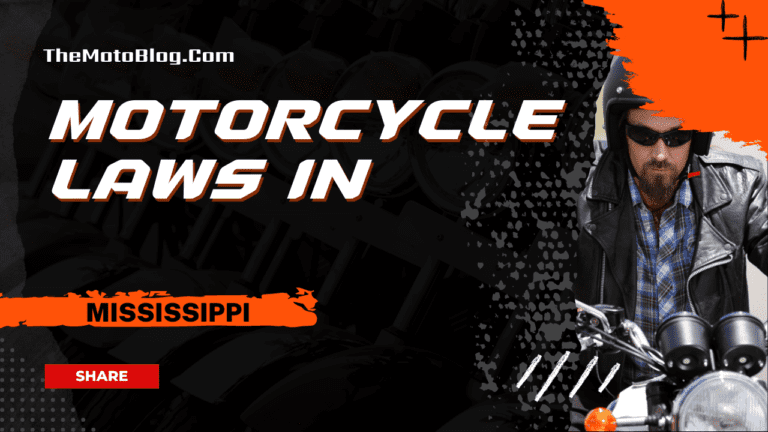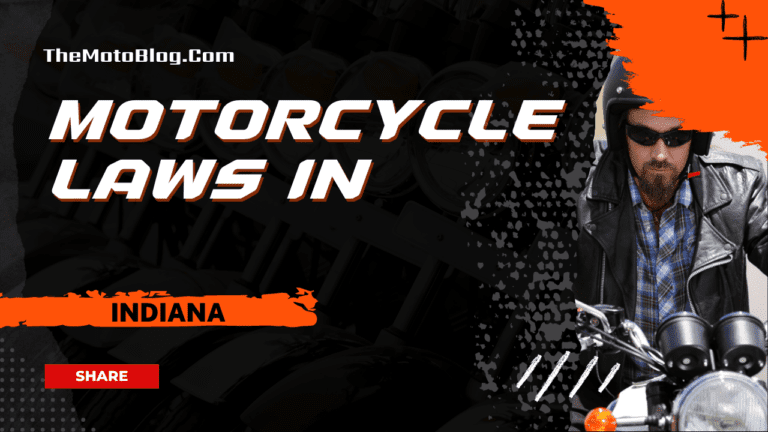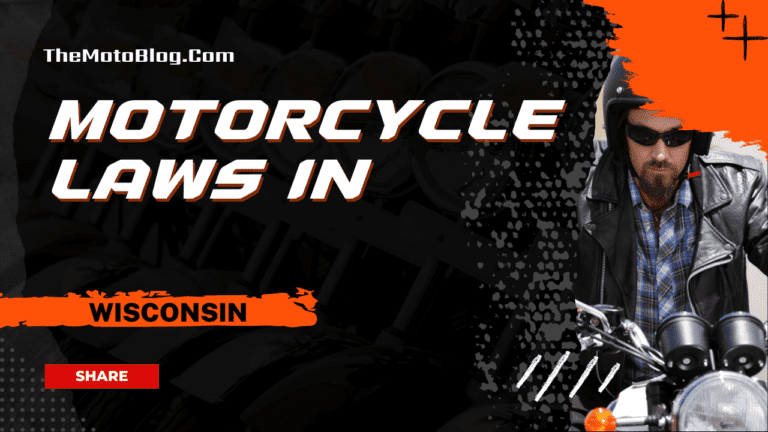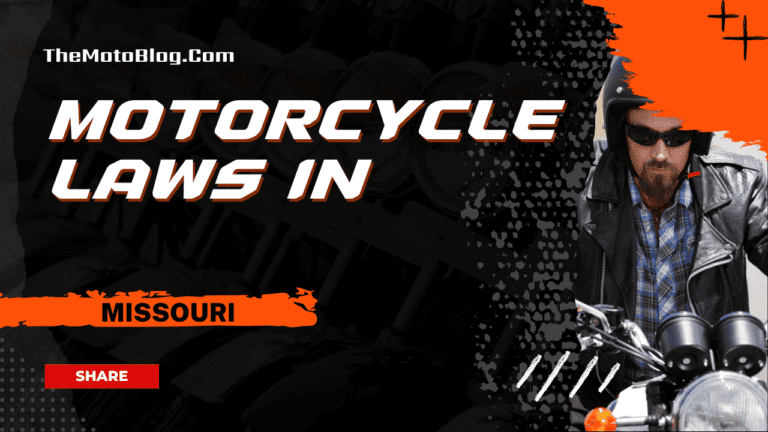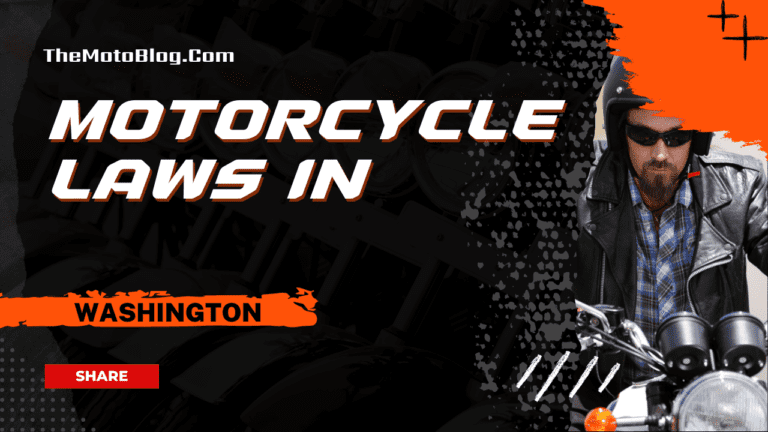Motorcycle Laws in New Hampshire: A Comprehensive Guide for Riders
Navigating the highways of New Hampshire on a motorcycle is an exhilarating experience like no other. But before you hit the road, it’s crucial to familiarize yourself with the state’s motorcycle laws. These regulations are in place not only to ensure your safety but also that of other motorists sharing the roadway.
New Hampshire has a set of specific requirements, from helmet rules to noise restrictions. For instance, did you know that while helmets are recommended for all riders and passengers, they’re only mandated if you’re under 18.
Understanding these laws isn’t just about compliance; it’s about cultivating respect for your fellow road users. So whether you’re a seasoned motorcyclist or someone considering getting their first bike, let me guide you through what you need to know about motorcycling in the Granite State.
Key Takeaways
- In New Hampshire, helmets are required for motorcycle riders and passengers under 18, but optional for those aged 18 and over.
- Eye protection isn’t mandatory unless riding at night or during poor visibility conditions.
- Passenger regulations state that motorcycles must have a permanent passenger seat and footrests.
- Insurance coverage is not compulsory for riders in New Hampshire, but it’s strongly recommended due to potential costs from accidents and injuries.
- Lane splitting, the act of riding between lanes of traffic or rows of vehicles, is prohibited in New Hampshire.
- Noise restrictions are enforced, with a limit of 92 decibels at 20 inches from the exhaust outlet.
- The state’s motorcycle laws discourage tandem riding in a single lane and dictate handlebar height shouldn’t exceed the shoulder level of the operator while seated.
- Legal consequences for breaking these laws can range from fines to license suspension and potential jail time.
- It’s suggested to adhere strictly to these laws for the safety of the rider and other road users, and to prevent legal complications.
Motorcycle laws in New Hampshire are known for their relatively liberal approach, particularly with regard to helmet usage. Unlike most states, New Hampshire does not require adult motorcyclists to wear a helmet, though eye protection is mandatory unless the bike is equipped with a windscreen. The neighboring states have distinct approaches to motorcycle safety. In Vermont, helmet usage is compulsory for riders under 21, while in Maine, helmets are mandatory for riders and passengers under 18 or within one year of obtaining a license. Massachusetts requires all riders and passengers to wear helmets. To the west, New York also enforces strict helmet laws, making helmets and eye protection mandatory for all riders. The disparity between New Hampshire’s motorcycle laws and those of its neighboring states reflects the varying attitudes toward personal freedom and safety considerations in the region, demonstrating the importance for riders to be aware of the specific regulations in each state.
Understanding New Hampshire Motorcycle Laws
Firstly, let’s delve into helmet laws. In New Hampshire, helmets aren’t mandatory for all riders. However, if you’re under the age of 18 or riding with a learner’s permit, you’ll need to wear one. It’s worth noting that while not required by law for all riders, wearing a helmet is always a wise safety precaution.
Next up is eye protection. According to New Hampshire law, eye protection isn’t required unless at night or during poor visibility conditions.
Another vital area to cover is passenger regulations. Here are some rules:
- The motorcycle must have a permanent passenger seat.
- Passenger footrests are mandatory.
- Passengers must also abide by the helmet laws mentioned above.
It’s important to mention insurance requirements too. Unlike other states where insurance coverage is compulsory for motorcycles, New Hampshire doesn’t mandate motorcycle insurance. Nonetheless, considering the potential costs associated with accidents and injuries on bikes, I’d strongly recommend getting insured.
Lastly but certainly not least – lane splitting: this practice isn’t allowed in our state.
Here’s a quick rundown of these key points:
| Law | Requirement |
|---|---|
| Helmet | Not mandatory except under 18 or with learner’s permit |
| Eye Protection | Necessary at night or poor visibility |
| Passenger Regulations | Permanent seat and footrests required; same helmet rules apply as driver |
| Insurance Coverage | Not compulsory but recommended |
| Lane Splitting | Prohibited |
Helmet Requirements in New Hampshire
In New Hampshire, helmets are not mandatory for all riders. Surprising? Perhaps. Yet, that’s how the law stands: unlike many other states, New Hampshire doesn’t require motorcyclists or their passengers to wear a helmet unless they’re under 18 years of age.
But let me be clear: while it may not be a legal requirement for all riders, wearing a helmet is always strongly recommended for your safety. After all, facts don’t lie: according to the Insurance Institute for Highway Safety (IIHS), helmets are about 37% effective in preventing motorcycle deaths and about 67% effective in preventing brain injuries.
Here’s what you need to know if you’re under 18:
- You must wear a helmet approved by the Department of Transportation (DOT).
- The helmet should fit snugly on your head and fasten securely.
- Eye protection is also required unless your bike has a windscreen.
| Age Group | Helmet Required | Eye Protection Required |
|---|---|---|
| Under 18 | Yes | Yes |
| Over 18 | No | No |
Eye Protection Under New Hampshire Law
However, just because it’s not legally required doesn’t mean it’s not a good idea. My advice? Always prioritize safety first when you’re out on the road. Riding without eye protection can lead to severe consequences if debris hits your face or if suddenly forced to deal with harsh weather conditions.
It’s crucial to mention that although New Hampshire doesn’t enforce an eye protection law for its riders, some states do. So, if you ride out of state lines and into neighboring Massachusetts or Vermont, for example, remember they have different rules:
- Massachusetts: State law requires all motorcycle operators must wear protective headgear unless they are over 18 and covered by health insurance.
- Vermont: The law demands all motorcyclists must wear eye protection unless their bike is equipped with a windscreen.
So there we have it – while I can confirm that no specific legislation in New Hampshire obligates bikers to use eye protection gear while riding motorcycles, it’s still highly advisable based on general safety practices and regulations in surrounding states.
Passenger Regulations in NH Motorcycle Laws
First off, it’s crucial for passengers to wear helmets. The law stipulates that any person under the age of 18 must wear protective headgear. However, it’s recommended for all riders and passengers, regardless of age, to don this safety equipment.
Next up is seating provisions. Here’s what you should know:
- Motorcycles must be equipped with proper seats for passengers.
- Footrests are mandatory if carrying a passenger.
- Passengers should always sit behind the driver unless the bike is designed otherwise.
I’ve put together this handy table outlining these requirements:
| Requirement | Description |
|---|---|
| Helmets | Mandatory for those under 18; recommended for all |
| Seats | Must have a designated seat for passengers |
| Footrests | Mandatory when carrying a passenger |
Now let’s talk about handlebars. According to NH laws, handlebar height shouldn’t exceed the shoulder level of the operator while seated. It aids in maintaining control and ensures both pilot and co-rider enjoy a safe ride.
NH motorcycle laws also discourage tandem riding (two abreast) in a single lane. Keeping it one by one helps maintain order on roads and lessens risks associated with crowding.
Lastly, remember that children can also ride motorcycles as passengers but there are conditions:
- They should reach certain height requirements.
- They must be able to grasp handholds.
- Their feet should touch footrests when seated upright.
Traffic Rules Specific to Motorcycles in New Hampshire
First up, let’s talk about helmets. In some states, they’re mandatory for all riders but not here. Riders aged 18 or older have the freedom to choose whether or not they want to wear a helmet while riding their motorcycle in New Hampshire. However, for those under 18, helmets are non-negotiable.
Now on to eye protection. Regardless of age, every motorcycle rider must wear protective eyewear unless their bike is equipped with a windscreen. That’s right – no windscreen means goggles or a face shield are an absolute must!
| Age | Helmet Required | Eye Protection Required |
|---|---|---|
| Under 18 | Yes | Yes |
| 18 and over | No (optional) | Yes (if no windscreen) |
Next let’s discuss passenger rules. If your bike isn’t designed for two people then don’t bring along a guest – it’s as simple as that! And if you do have room for an extra person? They must use footrests at all times during the ride.
Here’s another unique law: lane splitting is strictly prohibited in New Hampshire. What does that mean? Well, motorcyclists can’t ride between lanes of traffic or rows of vehicles.
And finally – insurance. It might surprise some folks but there’s no mandatory insurance requirement for motorcycles in this state! But remember: just because it’s not required doesn’t mean it’s not recommended.
- Helmets optional for riders aged 18 and above
- Protective eyewear required without windscreen
- Passengers only allowed on bikes designed for two; must use footrests
- Lane splitting is prohibited
- Insurance isn’t mandatory but highly recommended
How Loud Can Your Motorcycle Be? Noise Restrictions
According to RSA 266:59-a, the law states that no person shall drive a motorcycle which produces a sound level of more than 92 decibels when measured at 20 inches from the exhaust outlet. This measurement is done while your bike idles – so revving up isn’t required! So, if you’re into loud pipes, you might want to reconsider before hitting the roads here.
| Measurement Point | Decibel Limit |
|---|---|
| 20 inches from exhaust outlet | 92 decibels |
Beyond this rule, there’s also some specifics for bikes built after certain years:
- Motorcycles manufactured before 1973: Not more than 84 decibels
- Manufactured between 1973 and 1985: Not more than 86 decibels
- Manufactured after 1985: Not more than 82 decibels
Mandatory Insurance for Motorcyclists in NH
However, there are certain situations where you’ll need coverage. For instance, if you’ve been convicted of a DWI within the past three years or have had your license suspended or revoked, then you’re required by law to get liability insurance. This type of insurance covers costs associated with damage or injury to others in an accident where you’re at fault.
Here are some key figures regarding minimum coverage requirements:
| Coverage Type | Minimum Requirement (in USD) |
|---|---|
| Bodily Injury (per person) | 25,000 |
| Bodily Injury (per accident) | 50,000 |
| Property Damage | 25,000 |
These numbers represent what’s typically required from those mandated to carry insurance. It functions as a safety net should an unfortunate incident occur.
Even though motorcycle insurance isn’t generally required in NH, it doesn’t mean it isn’t wise to consider getting some form of protection anyway. Accidents do happen and can be costly without any financial backup plan.
- Comprehensive coverage can protect against theft or damages caused by incidents other than collisions.
- Collision coverage is ideal for repairs or replacement after an accident.
- Uninsured/underinsured motorist coverage is beneficial when involved in an accident with someone who has no/insufficient insurance.
Consequences of Breaking Motorcycle Laws in New Hampshire
Breaking motorcycle laws in New Hampshire is no small matter. The consequences can be severe and far-reaching. Not abiding by the rules not only puts your personal safety at risk, but it can also lead to heavy fines, license suspension, or even jail time.
Let’s break down some potential penalties:
- Violation of helmet law: New Hampshire doesn’t require all riders to wear helmets. Yet if you’re under 18 and caught without a helmet, you’ll face a fine up to $100.
- Operating without a valid license: If you’re riding without the proper endorsement on your driver’s license, brace yourself for a hefty fine ranging from $250 to $500 or up to 30 days in jail.
- DUI offenses: New Hampshire takes drunk driving seriously. A first-time offense could cost you anywhere between $500-$1,200 in fines alone. Plus, expect mandatory participation in an Impaired Driver Intervention Program (IDIP).
Here’s how these penalties stack up:
| Violation | Fine ($ USD) | Possible Jail Time |
|---|---|---|
| Helmet Law (under 18) | Up to 100 | No |
| Operating without License | 250 – 500 | Up to 30 days |
| First-time DUI Offense | 500 -1200 + IDIP participation costs | Depends on severity |
Remember that accumulating too many infractions within a certain timeframe can escalate legal action against you. Repeat offenders may face increased fines or even loss of their driving privileges.
Wrapping Up: Abiding by Motorcycle laws in New Hampshire
Riding a motorcycle through the scenic routes of New Hampshire is an exhilarating experience. But remember, it’s imperative to adhere to the state’s motorcycle laws. Not only do they ensure your safety, but they also prevent any legal complications that may arise.
Let’s quickly recap some of these crucial rules. Always wear a helmet if you’re under 18 or if you’ve yet to complete an approved rider training program. Don’t forget about eye protection too – it’s required regardless of your age or level of experience.
You won’t have to worry about handlebar height restrictions in New Hampshire – there aren’t any! However, lane splitting is strictly prohibited. It might seem like a quick way out of traffic, but it’s not worth risking your safety and breaking the law.
In terms of passenger rules, there are specific requirements for seating and footrests:
- The bike must be designed to carry more than one person
- There has to be a permanent regular seat or an additional seat for the passenger
- Footrests for the passenger are compulsory
The sound levels from your exhaust system should comply with New Hampshire’s noise control regulations as well. They measure this on a scale known as ‘A’. Below is how it works:
| Speed (MPH) | Maximum Permissible Sound Level (A) |
|---|---|
| < 35 | 82 db(A) |
| > 35 | 86 db(A) |
Remember that being aware and practicing these rules will not just help you avoid penalties but will also contribute towards creating safer roads for all motorists in New Hampshire.
So before you rev up that engine and set off into the horizon, make sure you’re well-informed about every aspect of motorcycle laws here in our beautiful Granite State. Ride safe!
Motorcycle Laws in the US By States
If you liked this article, then please subscribe to our YouTube Channel for more Bike Videos. You can also find us on Instagram, Twitter and Facebook.
Disclosure: As an Amazon Associate, I earn from qualifying purchases. Read more about Amazon Affiliate Disclaimer.

Vishwanath Mathpati
I am Vishwanath Mathpati, a full-time Blogger and Motorcyclist from Bidar, Karnataka. I love writing about my Motorcycles Stories and Riding Gears on this blog.
Know More About Me.


